Zambia
Travel Information
Country Information
Zambia covers an area approximately twice that of Germany and has a population of almost 20 million. Zambia is a poor nation whose inhabitants mainly live from agriculture and subsistence farming. Its service and industry sector is still underdeveloped. Copper mining in the Copperbelt constitutes one of Zambia's principal sources of revenue.Zambia has huge potential with regard to tourism and hosts some very exciting wildlife areas, such as the area around Victoria Falls / Livingstone, Kafue National Park, Lower Zambezi National Park, South Luangwa National Park and the lesser know Liuwa Plains, Kasanka NP, Bangweulu Wetlands and North Luangwa National Park.
What does a safari in Zambia cost?
The highest prices for a safari in Zambia have to be paid for the travel period July to October. In these months there is almost no rain, the sun shines and the animal sightings are phenomenal. Local flights in Zambia are not very expensive as long as they are not on charter basis. Hidden costs are the park fees and conservation fees, which must be included in a trip in addition to accommodation prices.
Climate and best times to visit
Zambia has a tropical climate that is modified by elevation and thus less intense in the high plateau. The dry season usually lasts from May to October. June to August can see night temperatures sink below 10°C. The best time for safaris is the dry season from June to October. Parks situated in the lowlands (South Luangwa and Lower Zambezi) can become really hot from October onwards and it is not really the ideal time for walking safaris if this is your thing. Many camps close in mid November as the hot and humid rainy season (December to April) brings quite severe tropical storms which make most roads impassable.Immigration rules and regulations
Both Swiss and EU citizens require a passport which is valid at least 6 months beyond the date of your departure from Zambia, and must contain at least two blank pages. No visa is required. The exact rules and regulations need to be confirmed prior to travel.
Flights
The capital Lusaka is usually accessed via Johannesburg with an effective flight time to Johannesburg of 10 hours and a 2 hr feeder flight. There are also flights from Johannesburg to Livingstone. Alternatives could be flights via Dubai to Lusaka using Emirates.
Luggage
There is a restriction of 20-23 kg per person when flying in light aircraft. Do not bring hard suitcases, but only soft sports bags.
Health and insurance
Malaria prophylaxis is recommended for travel to Zambia. Please seek advice from your doctor. Make sure that you are adequately insured, particularly for a medical evacuation from a remote area and repatriation. All necessary medication must be brought from home. Do not rely on getting the required medication in Zambia. All medication must be kept in your hand luggage.
Currency and methods of payment
The national currency is called the Zambian Kwacha. Major credit cards are accepted, but please make sure that your PIN code works, as transactions via the automated teller machines (ATM) are faster and much more reliable. Most lodges accept credit cards. Tips to guides and camp staff can be given in cash in US Dollars. The local staff can't change any other currency into local currency due to bank restrictions. Please note that your dollar bills should not be older than 2010 as the local banks do not accept older dollar bills.
Dress Code
There is no specific clothes that you need to bring on a safari. Comfortable, casual clothes are your best choice. For the game drives, all colours are allowed. For walking safaris, only brown, green or beige tones are recommended. For the period from May to August, bring warm clothes, including hats and gloves. As for footwear, we recommend comfortable, open sandals and a pair of sturdy shoes. Hiking boots are not necessary unless you have planned extensive walks.
Communication
English is the official language. Mobile connection is usually good, unless you are far away from urban centres. However, most camps provide Internet / Wifi access nowadays.
Food and drink
Food at the lodges is of excellent quality. We recommend you to drink only bottled drinking water. Only bottled mineral water and filtered ice are available at the lodges.
Electricity
The power supply is 220 - 240 volts. Adapters for all countries are present at all good lodges. Computers, cameras and iPods can then be recharged. The power supply is available 24 hrs a day at most lodges. The plugs have either three large round prongs or three square prongs.
Laundry
Clothes can be washed at almost all lodges. Do not take too many clothes, instead make use of the laundry service wherever possible.
Traffic
Traffic in Zambia drives on the left-hand side.
Time difference
November to March: No time differenceApril to October: + one hour




